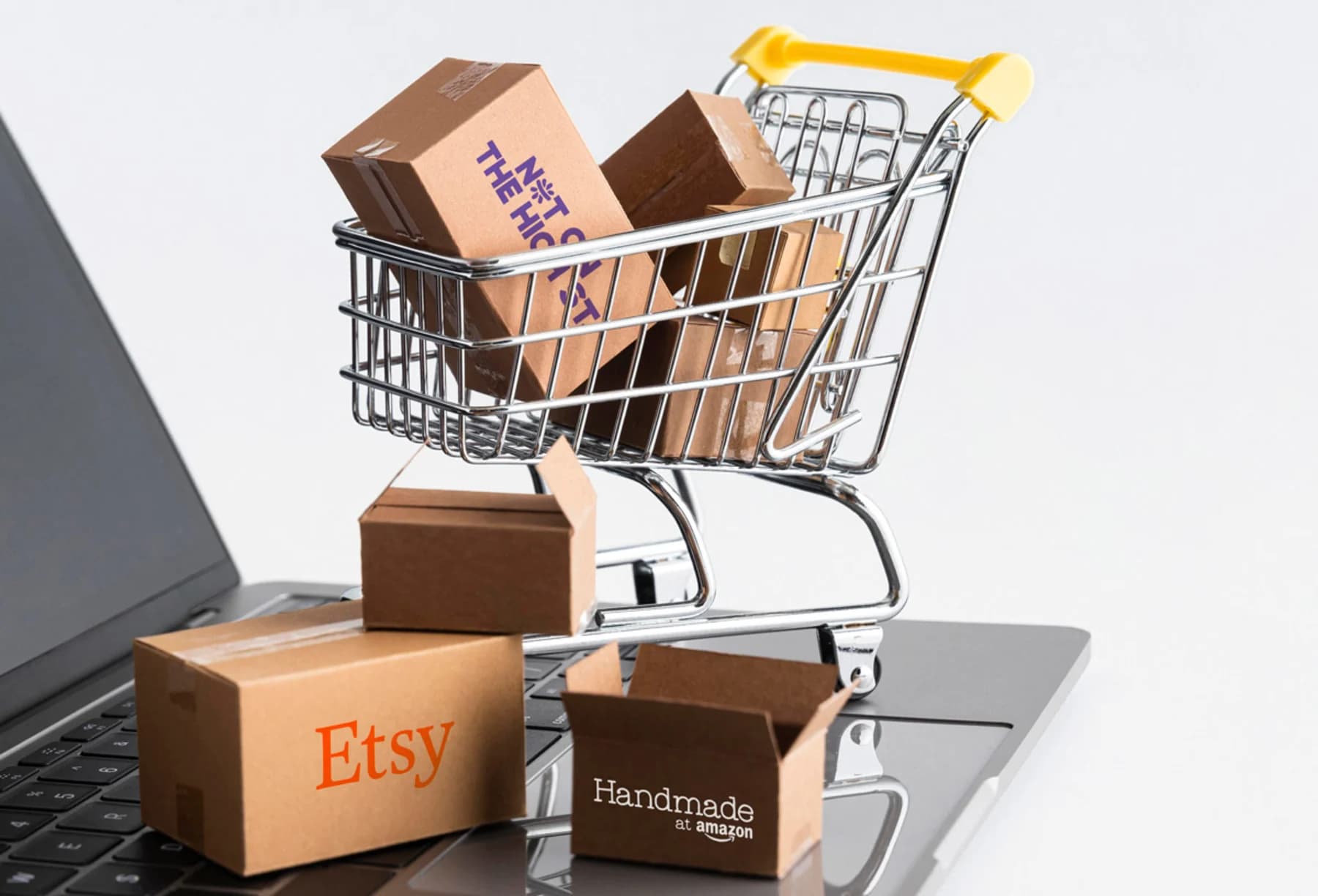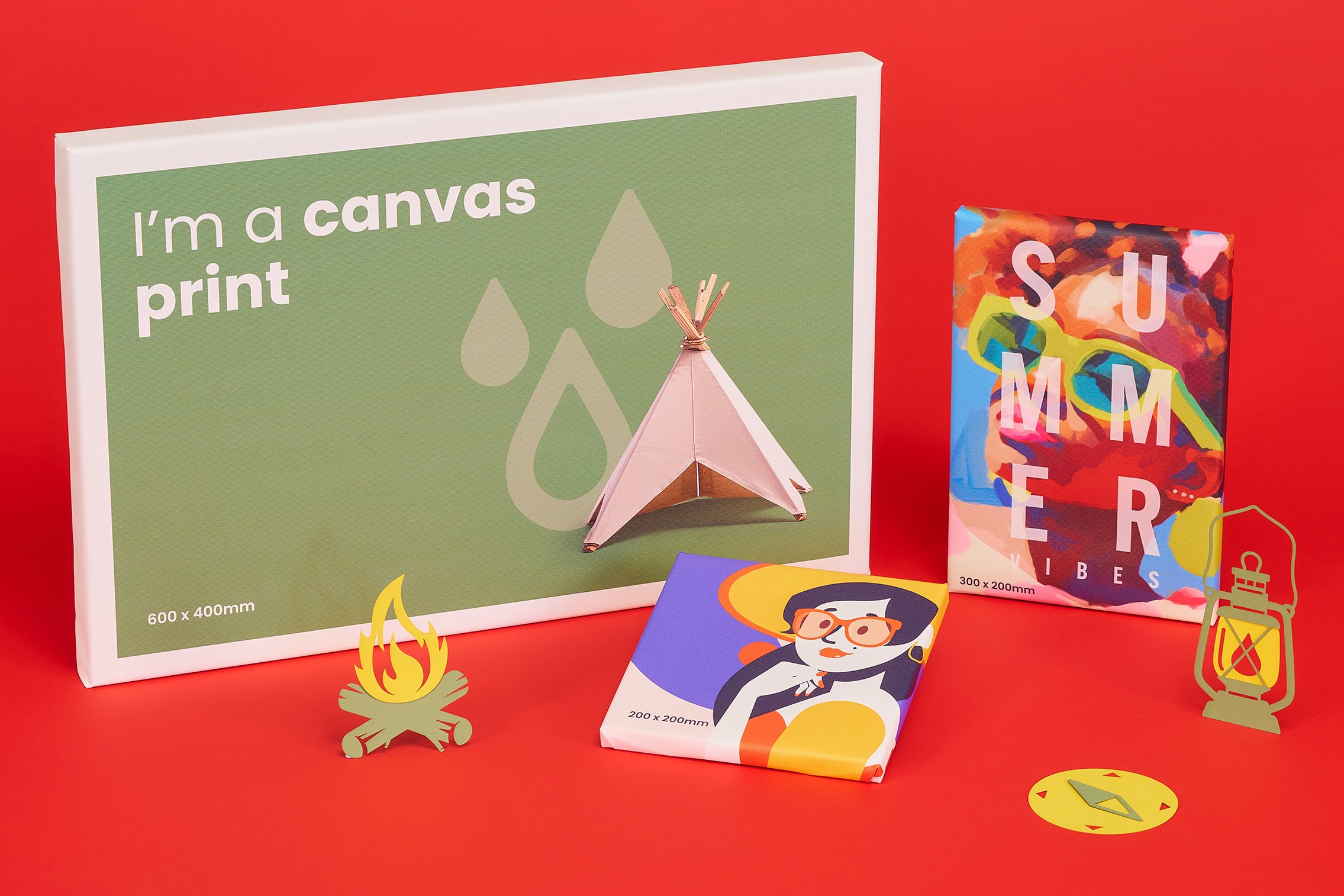The Best Online Marketplace: Seller Costs and Benefits
The world of online shopping has made it relatively easy for anyone to dip their toe in the water and set up their own business. Crafty online marketplaces make reaching huge audiences with a voracious appetite for new, novel and unique items simple which is why so many sellers choose to sell their products through a marketplace.
From handcrafted items to personalised gifts, many creative entrepreneurs choose to use marketplaces to sell online, but which is the best online marketplace to sell your products?
It’s reported Amazon Handmade has around 6 million sellers and Etsy has around 5 million sellers, all spread across hundreds of countries, so competition is very strong. Not on The High Street, on the other hand, has around 5,000 sellers, so competition is much less strong compared to that of Not on The High Street and Amazon Handmade.
Choosing the best online marketplace
If you’re wanting to find the best online marketplace to sell your goods or compare Amazon Handmade vs Etsy or Not on The High Street vs Etsy, explore what each marketplace offers you as a seller as well as the associated costs and commitment. Whilst Not on The High Street may be the best marketplace for one seller, Etsy or Amazon Handmade may be the best marketplace for another, each platform has its own seller terms so it’s key to look which work best for your brand.
Which one should you choose? Etsy or Not on The High Street or Etsy vs Amazon Handmade – it’s a minefield of decision making.
Selling on Etsy
Etsy is undoubtedly one of the most popular selling sites, and it’s very easy to set up an account via their online sign up system. As part of the Etsy set up process, you set the location of your Etsy shop, the currency you want to trade in, your Etsy shop name and your payment and billing methods. To become a verified seller, you need to use either a credit card or PayPal account, with funds from any sales going straight to your bank.
What are the Etsy fees?
Etsy will charge you a 6.5% transaction fee on the sale price when an item sells or if you use Etsy payments there is an additional 4% + £0.20 payment processing fee. Etsy sign up fees are 17p per item with listings active for four months or until the item sells. Other potential costs to take into consideration is 15% from Etsy’s offsite ads where Etsy advertise your goods throughout the web. If you make a sale through one of these ads, then the fee will be applied.
Other additional services include Etsy Plus – “an expanded set of tools to help jump-start growth” which includes emails to customers to let them know when items are in stock and bonus listings and advertising credits. Etsy is certainly one of the best marketplaces to sell online – after all, five million sellers choose to sell their goods on the platform!
However, Etsy is not necessarily the right marketplace for everyone. One experienced seller, Darla Thornton Lyon, also recommends selling through Instagram, believing that “we have to do 80% of the work to drive traffic through Etsy.”
Selling on Not on The High Street
If Etsy doesn’t seem like the right platform, then another option is Not on The High Street. Prices may be higher, but that reflects the huge volume of traffic that moves through this site. With more than 38 million visitors a year, it is way ahead of its main rivals.
Becoming a Not on The High Street seller involves filling in an online form, which will be followed up by an email request for images of the products you want to sell. You should hear back within a week as to whether your application has been successful or not.
Not on The High Street Seller Fees
If your application is successful, you’ll need to pay a one-off joining fee of £199 plus VAT. There are no charges for listing products on Not on The High Street, but everything you sell will be subject to a 25% commission fee. Additional services available are business guidance, such as SEO support and a storefront review.
Selling on Amazon Handmade
Arguably not quite as well known, Amazon Handmade has actually been around since 2015 and allows customers to shop “genuine, handcrafted goods” across a range of categories. To apply to become a seller on the platform, applicants must fill out this form. In order to register, you will need a business email or Amazon customer account, a chargeable credit card, a valid form of ID and company registration details, including VAT number if applicable. Smaller businesses or new starters may not even have these details yet, so they may find one of the other online marketplaces more feasible.
Amazon Handmade offers the flexibility to sell one type of item or literally thousands, with a number of different plans that sellers can choose from. If you select one and then find it’s not right for you, it’s very easy to change. Amazon uses an application process to add new artisans to the Handmade category to ensure customers are able to buy with confidence. Joining Handmade, creating a shop and listing products is free, but you will need an Amazon Professional plan.
Amazon Handmade Fees
The individual plan costs 75p per sale, while sellers using the Professional plan pay £25 per month, no matter how many items they sell. When you make a sale, Amazon Handmade will deduct a 12.24% referral fee, and your products must have a Global Trade Item Number (GTIN), such as a UPC, an ISBN, or an EAN. There are also shipping fees to take into account or you may want to consider signing up for FBA – Fulfilment by Amazon – where the company manages your order for you.
There are also a range of additional services you can use, such as promoted products, a portal for your business on Amazon, targeted advertising and even getting a Prime badge for faster shipping.
While the outlay for all of these sites is not huge, when starting off in online marketplaces, it pays to do your research. Weigh up the options, look at what you feel is the best fit for you and what you offer and give it a try. If you’ve got the budget, you may feel like two or more is the way to go, and hopefully, you can sit back and watch the sales roll in.
Posted on November 28, 2022 by WTTB
Related topics:



